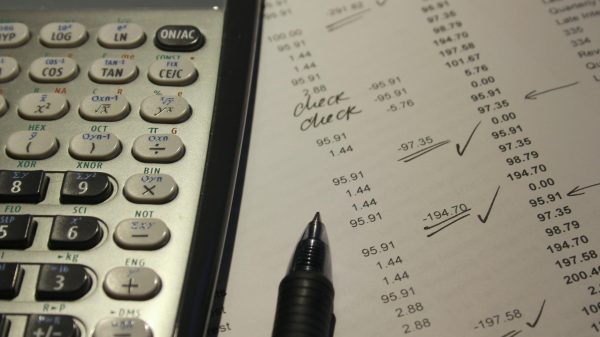Most probably, when shopping around for a mortgage, you have run into the term loan to value ratio (LTV). Maybe you have neglected it, but keep in mind that it is an important factor when applying for a mortgage. Because of the importance of this ratio, you must understand what a loan-to-value ratio is. Namely, you should know the impact this ratio has on your ability to apply for a mortgage, along with the influence on your mortgage terms.
What is a loan to value ratio?
This ratio represents the risk valuation ratio used by banks as well as other financial institutions. Banks and other lenders are making risk assessments using the LTV ratio prior to making any mortgage-related decisions.
The size of this ratio influences the decision of whether a mortgage will be approved or not. If a valuation shows a high LTV ratio, then the borrower is perceived as a riskier category. Consequently, a borrower with a high LTV ratio will have a higher cost to borrow the funds if the mortgage is approved. Moreover, banks may require clients with a high LTV ratio to buy mortgage insurance to compensate the lender for the higher risk.
Noteworthy mentioning is that you should also distinguish between equity and loan to value ratio. The equity is showing the portion of your property, which is yours, while the LTV ratio shows how much of the property value is financed through debt. Stated differently, the difference between the property value and the mortgage represents what you own, i.e., your equity.
Based on the level of your equity (or down payment), the loan to value ratio can be placed into one of the three basic categories:
- Low LTV mortgages – are considered the cheapest mortgages because you will be charged a lower interest rate. The downside is that you need to make a higher down payment. Thus you need to have a substantial amount of savings. The LTV ratio for low LTV mortgages can be around 60% or 65%.
- Mid-range LTV mortgages – are considered mortgages where the LTV ratio is somewhere between 70% to 80% interval.
- High LTV mortgages – are mortgages where the loan to value ratio is anywhere above 80%. The advantage of these mortgages is that they require a very low level of deposits. The downside, though, is that lenders charge higher interest rates on these mortgages. In addition, some lenders might require you to pay for private mortgage insurance.
In addition, you should also be familiar with the term “negative loan to value ratio.” A negative LTV ratio is a situation in which the value of your home is less than the amount of your loan. For a better understanding of the negative LTV, you owe more than the value of your home in simple words. So, the logical thing to ask is how the value of your mortgage can be higher than the value of your home. Well, this happened during the financial crisis. Namely, because of the decrease of properties value, many people were faced with negative equity. One factor contributing to the negative LTV is that many of the borrowers had mortgages with a high LTV ratio.
In some cases, they borrowed more than the value of their homes. This borrowing was made based on future expectations about the increase in property value. In reality, after the credit crunch, the value of their homes has decreased.
For example, consider the pre-crisis information in Column A and post-crisis information in Column B.
| Column A (pre-crisis) | Column B (post-crisis) | |
| Property value | $250,000 | $200,000 |
| Mortgage amount | $200,000 | $200,000 |
| LTV ratio | 80% | 100% |
You can see that before the crisis, the property was worth $250,000. With a mortgage of $200,000, the LTV ratio is 80%. On the other hand, let’s say that an economic crisis negatively affects property value. After the crisis, the mortgage amount remains the same – $200,000, but what has changed is the home value from $250,000 down to $200,000. You can see that although the mortgage amount is the same, the loan to value ratio has increased from 80% up to 100%. If property value goes further down, you will face a negative loan to value ratio.
This is the reason why lenders prefer borrowers with lower LTV ratios and why with a lower LTV ratio, you are charged with a lower interest rate. A higher LTV ratio means that a slight downward change in property value could increase the LTV ratio, thus becoming an even more risky borrower.
Calculating the loan to value ratio is fairly simple:
You need to know the mortgage amount and the value of the property. Next, divide the mortgage amount by property value. The result you get is your LTV ratio.
The result should be expressed in percentage. For example, you want to apply for a $120,000 mortgage to buy a home. The home value is $140,000, this means that your LTV ratio is 85.71% (120,000/140,000).
The reason lenders are determining the LTV ratio is to see how much risk they are exposed to when they are approving a mortgage.
Applying for a mortgage for an amount that is around the property value (or purchase price) will set the lenders with a higher risk in terms of mortgage default. This so because a high LTV ratio means that there is little or no equity accumulated within your home (or property under consideration for purchase). Hence, in case of a foreclosure, the bank might not sell the property for a price that would, at least, cover the outstanding mortgage balance.
A typical LTV ratio is considered less risky by the lenders and thus offers better terms (lower interest rates) is an LTV ratio at or below 80%. An LTV ratio of more than 80% may not impede your ability to get approved, but your mortgage would most definitely be more expensive. This is because you might be charged a higher interest rate, and you might need to take on mortgage insurance, which will also increase your monthly payment. The good thing is that insurance coverage is required until your LTV ratio comes down to 80%.
Banks and other lenders are applying loans to value calculations for purchases as well as refinancing loans. But keep in mind that the calculations about the LTV ratio depend on the purpose of the loan. It is clear by now that the calculations for the LTV ratio for purchases are made by dividing the loan amount by the sales price of the property. On the other hand, the LTV ratio calculations for a refinance are based on the loan size divided by property appraised value.
What can you do if you have a high loan-to-value ratio?
Some borrowers do not have sufficient funds for a down payment when buying a property to benefit from a mid-range of low LTV ratio. In addition, banks and other financial institutions might not be willing to lend money to borrowers with a high loan-to-value ratio. As it was mentioned, this is so because they are perceived as much riskier. Thus they have a higher probability of default. However, there is a couple of high loans to value ratio home buyers programs, some of these programs are:
VA loan – are loans which are backed by the U.S. Department of Veterans. An LTV ratio of up to 100% is allowed (correct – you do not need a down payment).
USDA loans – are loans insured by the U.S. Department of Agriculture. As with the VA loans, these loans also allow an LTV ratio of up to 100%.
FHA loans – are insured by the Federal Housing Administration. According to the guidelines, you need to make a 3.5% down payment to get an FHA loan. This means that FHA loans tolerate an LTV ratio of 96.5%
Conventional loans – are loans backed by Fannie Mae or Freddie Mac groups. They demand a slightly lower down payment compared to FHA loans, or a down payment of 3%, meaning that they allow an LTV ratio of 97%.
It should be noted that aside from the high loan to value programs for home buyers, there are high LTV ratio loans available for refinancing.
Never make a crucial mistake and take your mortgage loan application for granted. Ensure that you are aware and informed about all relevant issues related to a mortgage loan. First and foremost, get acquainted with the terminology and make sure you understand it. One such aspect and terminology is the loan to value ratio (LTV). You should comprehend what a loan to value ratio is. You should know that before applying for a mortgage, you can calculate your LTV. Keep in mind that the higher the ratio, the lower amount of down payment you need. But, you will be charged a higher interest rate because of the higher risk for default. On the contrary, low LTV will save you money in the long run because of the lower interest rate, but you need a higher amount of funds as a down payment. Never make a rushed decision, always be well informed before applying for a loan.






